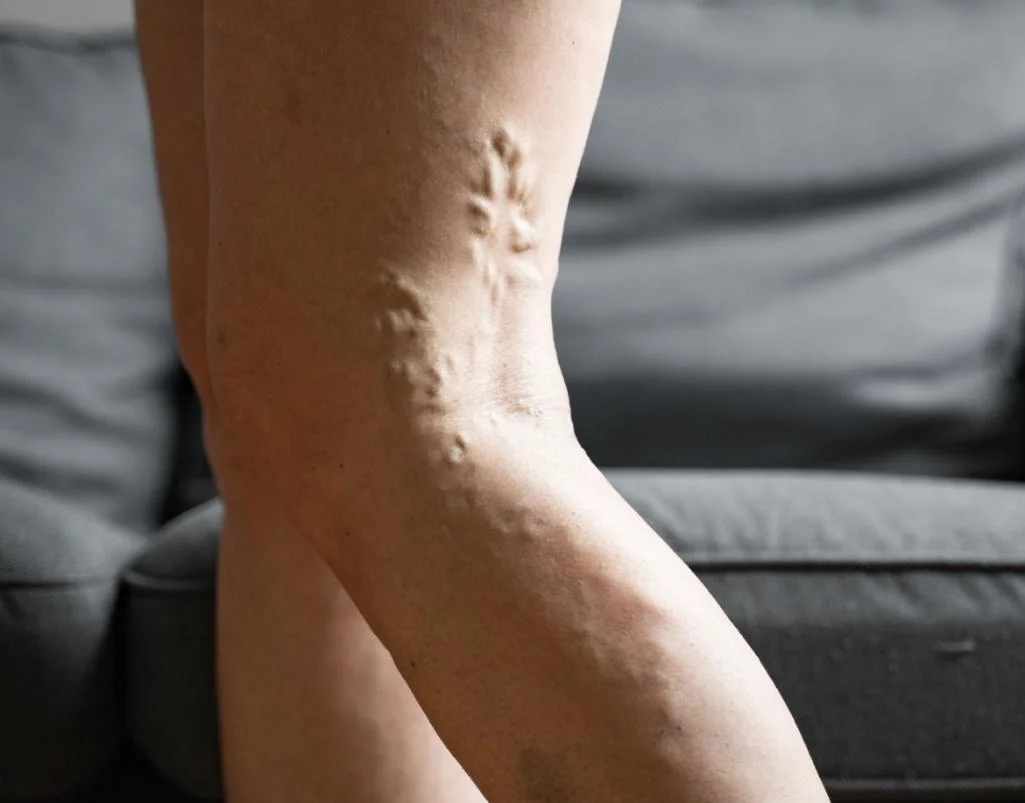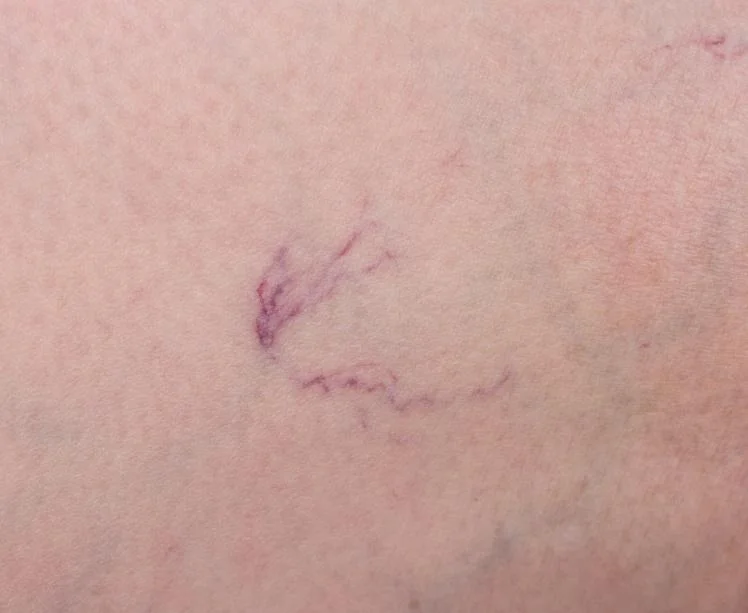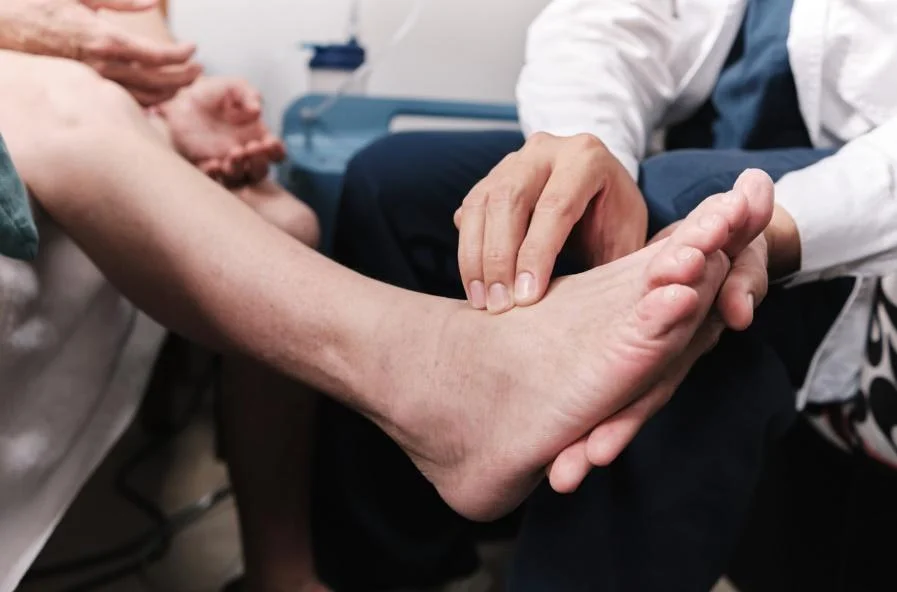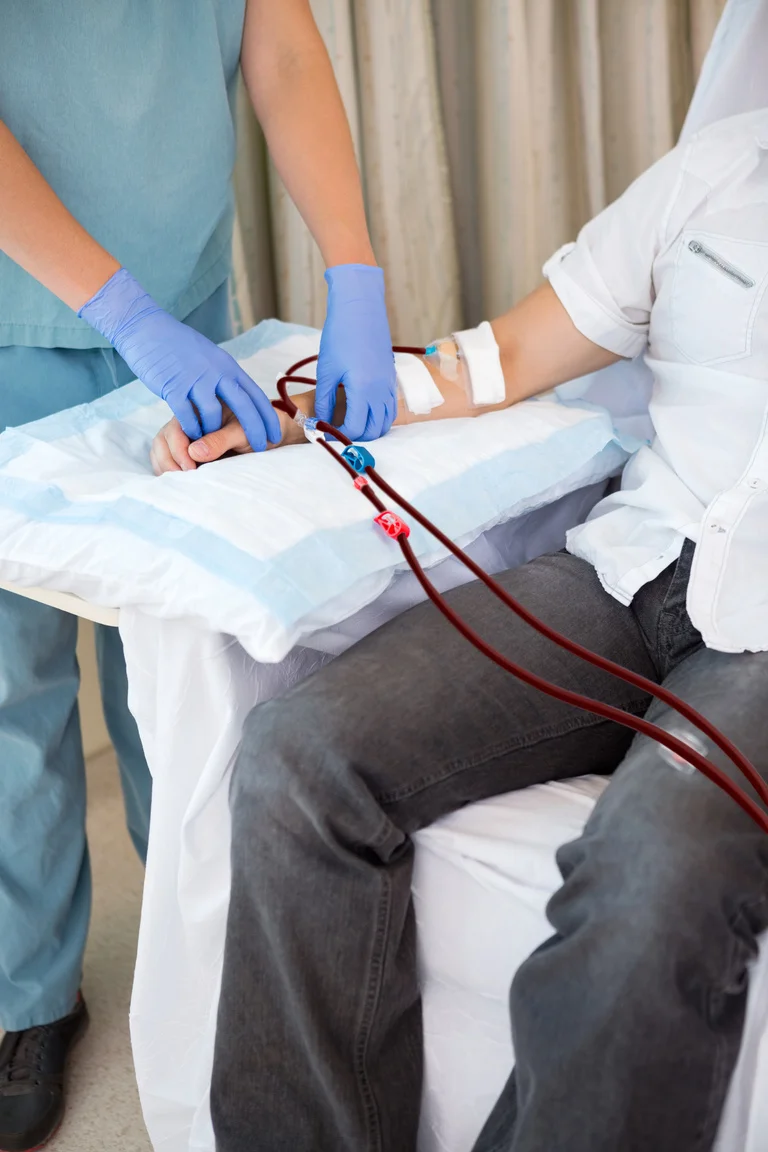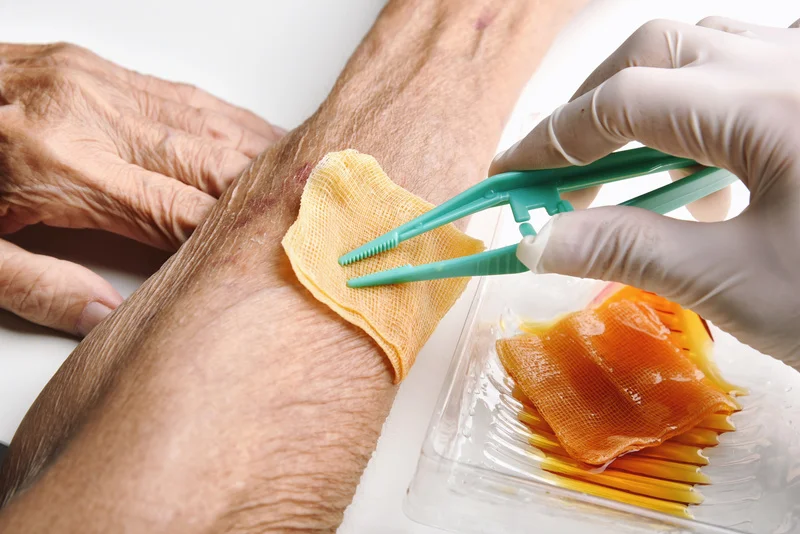
Pelvic Congestion Syndrome (PCS) – also known as pelvic venous insufficiency – is a chronic medical condition where varicose veins form in the pelvis, leading to persistent pelvic pain. It predominantly affects women of childbearing age (typically 20 to 45 years old) and is uncommon after menopause. In PCS, veins in the pelvic region (often around the ovaries and uterus) become dilated and weakened, causing blood to pool and pressure to build up. This venous congestion can result in a constant dull ache and other life-disrupting symptoms. Importantly, PCS is an under-diagnosed cause of chronic pelvic pain – research suggests it may account for up to 30% of chronic pelvic pain cases, meaning many women suffer for years before getting the correct diagnosis.
At our clinic in Singapore, we aim to raise awareness of PCS and provide effective, minimally invasive endovascular treatments. Below, we explain the symptoms to watch for, how PCS is diagnosed, and the advanced treatment options available. Patients in Singapore – as well as those from neighboring countries like Indonesia, Malaysia, and Cambodia – can find relief through our specialized care.
Symptoms of Pelvic Congestion Syndrome
PCS often presents with chronic pelvic pain that lasts more than 6 months. Unlike menstrual cramps, PCS pain is non-cyclical (not limited to your period) and typically described as a dull, aching heaviness deep in the pelvis. Key characteristics of PCS pain include:
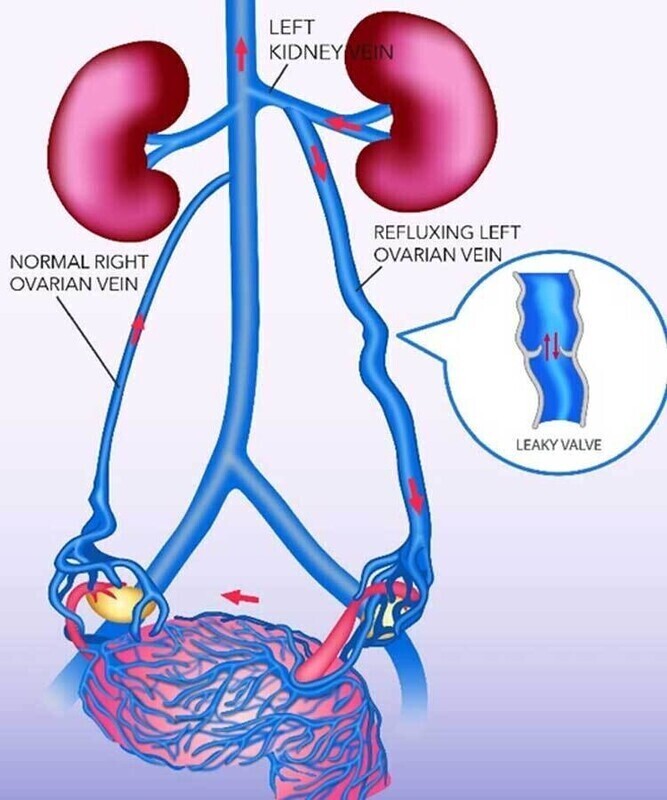
1. Worsening pain after prolonged standing or sitting: Gravity and posture can increase pelvic vein pressure, so the ache tends to intensify at the end of the day or after long periods on your feet. Many women report relief when lying down.
2. Pain that flares during or after intercourse: Pain during sex (dyspareunia) is common in PCS. Women may feel increased pelvic pain during intimacy or for hours afterward, due to engorged pelvic veins.
3. Menstrual-related pain escalation: Although PCS pain isn’t caused by menstruation, it often gets worse just before or during a period (when hormonal changes cause veins to dilate).
4. Lower back and leg discomfort: The dull pelvic ache can radiate to the lower back, hips, or thighs, sometimes mimicking back pain or sciatica. Some patients also experience a heavy or dragging feeling in the legs.
Beyond pain, PCS can lead to other symptoms and signs that may be overlooked or attributed to other conditions:
- Visible varicose veins in unusual areas: Varicose veins may appear around the buttocks, upper thighs, vulva, or vaginal area – locations that hint at internal pelvic vein congestion. These bulging veins are an important clue and often coexist with PCS.
- Urinary and bowel symptoms: Because congested pelvic veins can affect nearby organs, women might notice bladder or bowel issues. For example, PCS can contribute to an irritable bladder (needing to urinate frequently or urgently) and irritable bowel symptoms (episodes of diarrhea or constipation). In some cases, stress incontinence (leaking urine when coughing or laughing) or mild pain with urination can occur.
- Pelvic tenderness: On medical examination, there may be tenderness when pressure is applied over the ovaries or along the pelvic floor. This tenderness, combined with the other symptoms, can raise suspicion for PCS.
Emotional impact: Living with chronic pelvic pain can also lead to emotional distress. Women with PCS often report fatigue, mood changes, anxiety or depression stemming from the ongoing pain and the effect it has on daily activities, work, and relationships. It’s important to address these concerns and reassure patients that their pain is real and treatable.
If you have pelvic pain that worsens with standing or sexual activity and isn’t explained by other gynecological issues, PCS could be the underlying cause. Recognizing these symptoms is the first step toward getting appropriate help.
Causes and Risk Factors
Pelvic Congestion Syndrome is essentially caused by poor blood flow in the pelvic veins. In healthy veins, one-way valves help blood return from the pelvis toward the heart. In PCS, these valves may be weakened or damaged, allowing blood to flow backward (venous reflux) and pool in the pelvis. The affected veins (often the ovarian veins and uterine vein plexus) become enlarged and tortuous – much like varicose veins in the legs, but hidden deep in the pelvis. The exact reason some women develop this venous insufficiency is often multifactorial. Key contributing factors include:
- Pregnancy-related changes: Pregnancy is a major factor in PCS. During pregnancy, a woman’s blood volume increases and the veins must expand (by up to 50% of their normal diameter) to handle the extra blood flow. The high levels of estrogen and progesterone also relax vessel walls. These changes, while normal in pregnancy, can stretch vein walls and damage valves. In women who have had multiple pregnancies, the cumulative effect can leave pelvic veins permanently dilated and valves leaky, even after delivery. This is why PCS is more common in women who have had two or more children.
- Hormonal influences: Estrogen (a female hormone) is known to weaken vein walls. PCS is rarely seen in postmenopausal women, which suggests that estrogen exposure during the pre-menopausal years plays a role. Conditions or treatments that increase estrogen levels (for instance, undergoing multiple IVF cycles or taking certain hormonal medications) might predispose some women to PCS.
- Compression of pelvic veins (anatomical variants): In some cases, PCS is secondary to anatomical compression of veins. For example, May-Thurner syndrome (where the left iliac vein is compressed by the overlying artery) or Nutcracker syndrome (compression of the left renal vein) can obstruct normal blood outflow. These conditions create higher pressure in the pelvic veins, contributing to varices and congestion upstream. Women with these anatomical issues might develop PCS symptoms even without pregnancies or hormonal factors.
- Genetic susceptibility: A family history of varicose veins or weak vein valves might increase one’s risk. Some individuals have inherently weaker connective tissue in vein walls or valves, making them more prone to valve failure. If you have leg varicose veins at a young age or relatives with vascular issues, it could correlate with a higher PCS risk.
Often, multiple factors overlap. For instance, a woman with a slight anatomical vein compression who then undergoes pregnancy may experience a perfect storm for PCS. It’s also worth noting that other pelvic conditions (like endometriosis or fibroids) can coexist with PCS, which sometimes confuses the diagnosis. However, those conditions do not cause PCS – rather, they are separate issues that a thorough evaluation can distinguish.
How Pelvic Congestion Syndrome is Diagnosed
Diagnosing PCS can be challenging because its symptoms mimic other gynecological disorders. At Dr. Darryl Lim’s vascular clinic in Singapore, we take a comprehensive approach to evaluation, often collaborating with gynecologists and other specialists to rule out alternate causes of pelvic pain (such as ovarian cysts, endometriosis, or uterine fibroids). The diagnostic process typically includes:
- Detailed Medical History: We begin by discussing your symptoms, their pattern, and what worsens or relieves the pain. Clues like pain relief when lying down, or pain flares after standing, raise suspicion for a venous cause. We also review obstetric history (pregnancies), menstrual cycle, and any prior pelvic diagnoses or surgeries.
- Physical Examination: A gentle pelvic exam is performed to check for tenderness in the lower abdomen and pelvis. The doctor will palpate (feel) areas around the ovaries, uterus, and pelvic floor. Tenderness in these areas, especially along the ovarian vein pathway, can suggest PCS. We also look for visible varicose veins on the buttocks, thighs, or vulvar area. If such veins are present, it strengthens the case for pelvic vein congestion as the source of pain.
- Doppler Ultrasound: An ultrasound scan is usually the first-line imaging test. This is performed by the sonographer via both transabdominal and transvaginal approaches with Doppler (a technique to visualize blood flow) to look at the ovarian veins and uterine region. This non-invasive scan can show dilated pelvic veins and detect reflux (backward blood flow) in real time. Ultrasound is convenient, safe, and radiation-free. Do note that in some women, the pelvic veins may be hard to visualize if they are located deep or if bowel gas interferes.
- Advanced Imaging (CT/MRI): If ultrasound results are inconclusive or more detail is needed, a CT scan or MRI of the abdomen and pelvis may be performed. These imaging modalities provide a detailed picture of pelvic anatomy. They can reveal enlarged ovarian veins or twisted varices that an ultrasound might not be able to visualise. An MRI is particularly useful because it can also highlight any other pelvic pathology (like endometriosis implants or fibroids), helping ensure we’re not overlooking a different cause of pain. We sometimes use MRI or CT to check for those anatomical compression syndromes (May-Thurner or Nutcracker) as well.
- Diagnostic Venography: To definitively confirm PCS, an ovarian venography may be recommended. This is considered the gold standard test. It’s a minimally invasive procedure where, in a catheterization lab setting, Dr. Lim inserts a small catheter (tube) into a vein (usually via a tiny puncture in the groin). Under X-ray guidance, the catheter is navigated to the ovarian veins, and a special contrast dye is injected. This dye makes the pelvic veins visible on X-ray. Venography can directly show refluxing blood and enlarged pelvic veins, confirming the diagnosis of PCS. If significant varices are found, we can often proceed to treat them in the same session (see embolization below). Venography is typically done if non-invasive tests suggest PCS and we are planning for a possible treatment intervention.
Differential Diagnosis: Throughout the evaluation, it’s important to consider and exclude other causes of pelvic pain. Conditions like endometriosis, adenomyosis, uterine fibroids, interstitial cystitis, and musculoskeletal pelvic floor pain can cause similar symptoms. Often, patients with PCS have been evaluated by gynecologists first and may have had some of these conditions ruled out. Our team ensures no stone is left unturned – we aim for an accurate diagnosis so that the treatment plan targets the true cause of pain.
Treatment Options for PCS with Dr. Darryl Lim
Pelvic Congestion Syndrome is very treatable, especially with modern endovascular (minimally invasive) therapies. Dr. Darryl Lim is a vascular and endovascular surgeon in Singapore who specializes in these cutting-edge treatments, which can provide relief without the need for open surgery. We tailor the treatment plan to each patient’s severity of symptoms, reproductive plans (e.g. if future pregnancy is desired), and specific vein findings. Generally, treatment falls into the following categories:
1. Conservative Management: For mild cases or as a first step, conservative measures can help manage symptoms:
- Pain Medication: Anti-inflammatory pain relievers (NSAIDs like ibuprofen) or acetaminophen can reduce pelvic pain and backache. These don’t fix the vein issue but improve quality of life.
- Lifestyle Modifications: Simple changes can alleviate symptoms. We advise avoiding prolonged standing or heavy lifting, since these worsen pelvic pressure. Taking breaks to lie down or elevate the legs can ease pain during the day. Regular low-impact exercise (like walking, swimming, or yoga) may encourage better venous return. Weight management is also important – maintaining a healthy weight reduces unnecessary pressure on pelvic veins.
- Compression Garments: In some cases, wearing compression stockings (thigh-high) can help with leg varicose veins associated with PCS and possibly reduce pelvic vein engorgement by improving overall circulation. There are even specialized pelvic compression garments for women that some find helpful.
2. Medical Therapy: Hormonal modulation can be used to relieve PCS symptoms, especially if a woman is not currently trying to conceive.
Hormonal Medications: Because estrogen contributes to vein dilation, medications that suppress ovarian hormone production can help reduce pelvic congestion. These include medroxyprogesterone acetate or GnRH agonists, which temporarily lower estrogen levels and create a menopause-like state, helping to shrink pelvic varices. Oral contraceptive pills may also be used to stabilise hormonal fluctuations.
However, do note that hormonal therapy is typically used as a short-term or adjunct measure, as symptoms often recur once treatment stops, and prolonged use may carry side effects. At our clinic, we work closely with gynaecologists to determine whether hormonal treatment is appropriate, based on the patient’s reproductive goals and overall health profile.
3. Minimally Invasive Interventional Procedures: Endovascular treatments address the root cause by closing off the problematic veins so blood can reroute through healthy veins. Dr. Darryl Lim specializes in these image-guided procedures, which do not require open surgery. The mainstay interventions for PCS are:
- Ovarian Vein Embolization: This is a keyhole procedure done under light sedation. Through a tiny incision (often at the groin or neck), a catheter is threaded into the dilated ovarian and pelvic veins (usually identified during the venogram). Using X-ray guidance, the abnormal veins are sealed off from within. Tiny metallic coils and/or a sclerosing agent (medical glue or irritant substance) are delivered through the catheter into the target veins. This causes the vein to close and block blood flow to the pelvic varices. Without the high-pressure reflux from these veins, the pelvic pain improves dramatically.
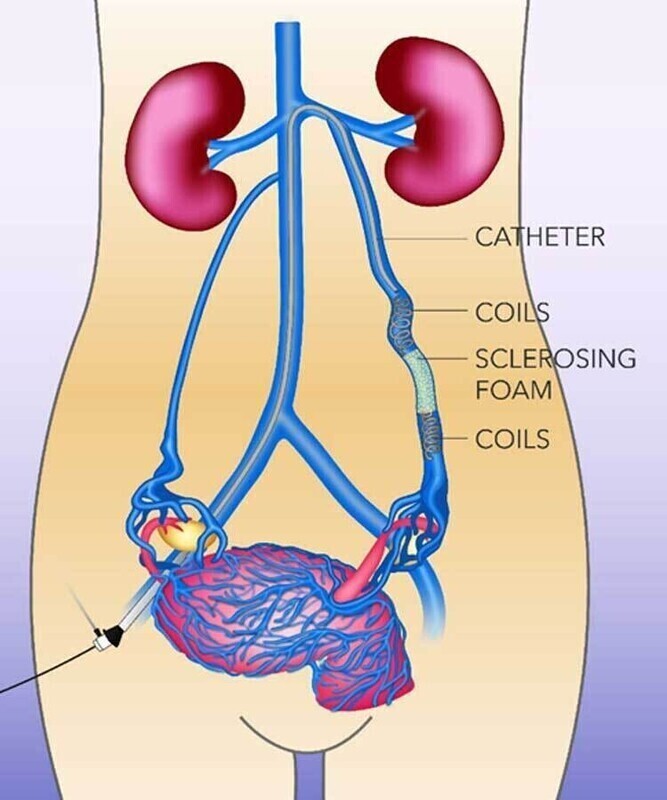
The procedure typically takes about an hour, and patients go home the same day. Ovarian vein embolization has a high success rate – studies report around 80% of patients experience significant pain relief following the procedure. Many women have reduced pain within days, with full benefits realized over a few weeks as the varices shrink. Because embolization preserves the ovaries and uterus, women can still become pregnant afterward if desired (though it’s often advisable to delay trying to conceive for a few months post-procedure).
- Pelvic Variceal Sclerotherapy: In some cases, aside from the ovarian veins, there are multiple enlarged pelvic vein networks (varices) that need treatment. Using a similar catheter technique, the doctor can inject a sclerotherapy solution directly into these varicose veins. The solution irritates the vein lining, causing the vein to scar and collapse. This is often combined with coil embolization for thorough closure. Sclerotherapy is especially useful for treating any visible vulvar or thigh varicose veins that are fed by the pelvic congestion.
- Iliac Vein Stenting (if needed): If an underlying compression like May-Thurner syndrome is contributing to PCS, we may also treat that by placing a stent in the compressed iliac vein. This is done in the same session via catheter. The stent is a small metal mesh tube that props open the vein, restoring normal blood outflow from the legs and pelvis. By relieving the compression, the pressure in pelvic veins drops. Stenting is only done in cases where a significant venous blockage is confirmed (via imaging) as part of the problem. Not every PCS patient will need this, but we have the capability to address it when indicated.
These minimally invasive treatments have the advantage of quick recovery. Most patients resume normal activities within a few days. There may be mild soreness at the catheter entry site or in the pelvis for a short time, but this is managed with pain medication and rest. No large incisions are involved – only a needle puncture – so there is no noticeable scar and a much lower risk of complications compared to open surgery.
4. Surgical Options (Rarely Needed): In the vast majority of cases, embolization effectively relieves PCS. Surgery is considered a last resort. In extremely refractory cases or when pelvic vein anatomy is unusual, options include ovarian vein ligation or even hysterectomy with ovarian vein removal. Another surgical approach is gonadal vein transposition, where the ovarian vein is surgically rerouted. However, such invasive surgeries are seldom required, especially now that embolization techniques are so successful. Open surgery carries more risk and longer recovery, so we pursue it only if minimally invasive methods cannot be done or fail to improve the condition.
Most women experience significant symptom improvement following appropriate treatment. Ovarian vein embolisation and related endovascular procedures have demonstrated success rates of 80–95%, with pain relief being either complete or substantially reduced. Follow-up is essential to monitor treatment response. Dr. Lim will typically schedule ultrasound assessments and review visits to track your recovery.
In rare cases where symptoms persist or recur, a repeat evaluation may be considered. This could include further imaging or a second embolisation if previously untreated or reopened veins are identified. Although recurrence is uncommon, long-term outcomes are best maintained by addressing contributing factors such as avoiding prolonged standing, managing any new varicose veins early, and maintaining regular follow-up where needed.
Compassionate, Specialized Care in Singapore
Managing Pelvic Congestion Syndrome requires not just medical skill but also understanding and support. Dr. Darryl Lim combines clinical expertise with a personable approach. Our clinic emphasizes patient education- we take time to explain findings and involve you in decision-making for your care. We also welcome collaboration with your gynecologist or primary physician, ensuring a multidisciplinary approach for optimal outcomes.
Why choose us? Patients from Singapore and the wider Southeast Asia region seek out Dr. Lim for his minimally invasive vein treatments and proven outcomes. We utilize state-of-the-art imaging and treatment techniques on par with top vascular centers worldwide. Equally important, we understand that chronic pelvic pain can be frustrating and life-altering. Our team is committed to providing empathetic, prompt care so you can regain your quality of life.
If you suspect you have Pelvic Congestion Syndrome or have been suffering from unexplained pelvic pain, don’t hesitate to reach out. Relief is possible with the proper diagnosis and treatment.
FAQ about Pelvic Congestion Syndrome
- A condition where pelvic veins become enlarged and congested, causing chronic pelvic pain.
- Often linked to faulty vein valves and hormonal changes, especially post-pregnancy.
- Also known as pelvic venous insufficiency or pelvic varices.
- Dull, aching pelvic pain lasting >6 months.
- Pain worsens when standing, improves when lying down.
- Pain during/after intercourse.
- Heaviness or pressure in pelvis, lower back ache.
- Visible varicose veins on vulva, buttocks, or thighs.
- Possible urinary or bowel irritability.
- Women aged 20–45, especially with multiple pregnancies.
- Those with leg or vulvar varicose veins.
- Pre-menopausal women (due to oestrogen influence).
- Women with unexplained chronic pelvic pain.
- Pelvic ultrasound with Doppler (first-line).
- MRI or CT scan for clearer vein mapping.
- Diagnostic venogram (gold standard; often paired with treatment in the same sitting).
- Exclude other causes like endometriosis or fibroids.
- Conservative: NSAIDs, hormone therapy, lifestyle changes.
- Definitive: Ovarian vein embolisation (minimally invasive, high success rate).
- Rarely: Surgical vein ligation or hysterectomy (for refractory cases).
- Light activity in 1–2 days; most resume normal activities within a week.
- Symptom relief may take 4–12 weeks to fully manifest.
- May contribute to subfertility, but many women conceive successfully.
- Embolisation is uterus- and ovary-sparing.
- Pregnancy after treatment is possible.
- If pelvic pain is persistent, unexplained, worsens with standing, or coexists with varicose veins.
- If initial gynaecology or ultrasound workups are normal.
- Referring GPs/OBGYNs should consider vascular referral when PCS is suspected.
- Gynaecologists
- Vascular surgeons
- Multidisciplinary care is often ideal.

